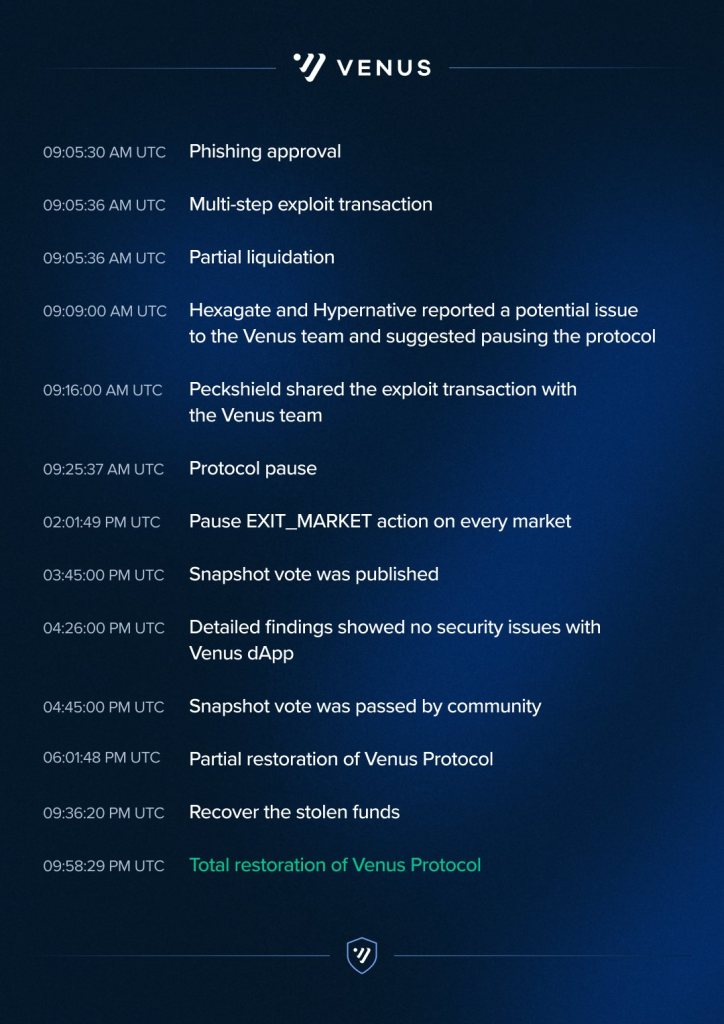Key Takeaways
- The decentralized lending platform Venus Protocol successfully helped a user recover $13.5 million in crypto stolen in a phishing attack.
- The attack was carried out by the North Korea-backed Lazarus Group, which used a malicious Zoom client to gain unauthorized access to the victim’s wallet.
- The recovery was made possible by an emergency governance vote that allowed the protocol to force the liquidation of the attacker’s wallet, demonstrating the power of on-chain governance.
In a rare and remarkable display of a decentralized community coming together, the DeFi lending platform Venus Protocol announced it helped a user recover a staggering $13.5 million in crypto.
The recovery effort, which took less than 12 hours, was a rapid response to a sophisticated phishing attack linked to the infamous North Korea-backed Lazarus Group.
The victim, identified as Kuan Sun, praised the collaboration between Venus Protocol and its security partners, calling the successful recovery “a battle we actually won.”
How the Phishing Attack Happened
The phishing attack was executed with a high degree of sophistication. According to a post-mortem report, the attackers used a malicious Zoom client, a type of malware disguised as the official video conferencing software.
This malicious client tricked the victim into granting delegated control over their account. Once inside, the perpetrators were able to borrow and redeem assets on the victim’s behalf, systematically draining millions in stablecoins and wrapped tokens.
Unlike a typical hack that exploits a flaw in a protocol’s smart contract, this was a social engineering attack where the user’s computer was the point of entry.
In this case, the bait was a legitimate-looking Zoom client that contained a malicious payload. The speed with which the exploit was detected by security partners HExagate and Hypernative allowed Venus to take immediate action.
On-Chain Governance to the Rescue
The recovery hinged on an emergency governance vote, a unique feature of decentralized protocols. This mechanism allows tokenholders to vote on critical decisions that can change the protocol’s rules in a dire situation.

In this case, the vote passed, allowing the protocol to execute a “forced liquidation” of the attacker’s wallet. Here, it was used to seize the stolen tokens and send them to a secure recovery address.
Final Thoughts
The successful recovery of $13.5 million by Venus Protocol is a monumental win for the DeFi space. It demonstrates that with the right combination of on-chain governance, community action, and expert security partners, it is possible to fight back against even the most formidable hacking groups.
Frequently Asked Questions
What is a phishing attack?
A phishing attack is a type of social engineering scam where an attacker tricks a victim into revealing sensitive information, such as private keys or login credentials, by impersonating a trusted entity.
How did Venus Protocol recover the funds?
The funds were recovered through an emergency governance vote, which allowed the protocol to force the liquidation of the attacker’s wallet and seize the stolen tokens.
What is on-chain governance?
On-chain governance is a system where a community of tokenholders can vote on protocol changes and critical decisions directly on the blockchain, without the need for a central authority.






